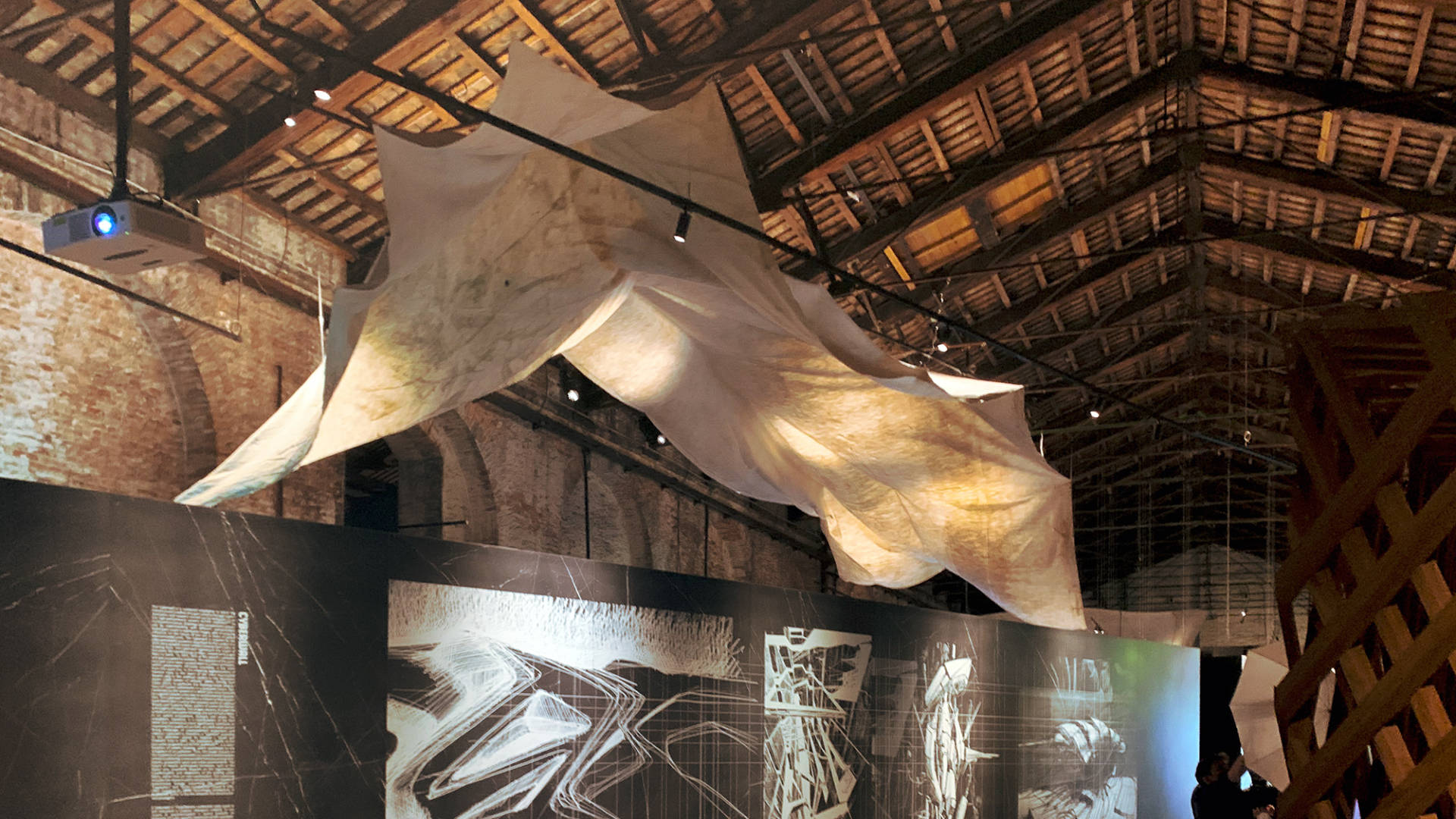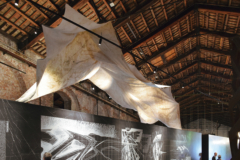Each summer, a quixotic ritual takes place in the Italian Alps. In a desperate attempt to prevent a beloved glacier from melting due to the warming global environment, local workers spread acres of white plastic tarpaulins across the slowly retreating ice. The work is done after the ski season closes, to protect a glacier that has lost more than a third of its volume since the 1990s, in hopes that the white tarps will block the sun’s summer rays and slow the glacier’s demise.
While climate change represents an abstract concept to many, for this Italian mountain community the warming climate is an everyday reality that has prompted them to action. This response became the inspiration and content for an installation co-created by the newest CBE faculty member, Assistant Professor of Architecture Giovanni Betti. The work, ‘Invisible Mountain — La montagna invisibile,’ was created in collaboration with architect Katarina Fleck, and will be part of the Italian Pavilion at the 2021 Venice Architecture Biennale, curated by Hashim Sarkis. Developed with the support of students of the University of the Arts (Universität der Künste, UdK) in Berlin, the piece features a section of the enormous sheets that are discarded each year when the glacier is uncovered, suspended overhead in a form reminiscent of the Alpine landscape it aims to protect, and allowing viewers to ‘experience the void’ left by the melting glacier.
While the installation may be ostensibly about a visible impact of climate change — the rapid melting of glaciers around the world — it also brings to our attention several contradictions. Ironically, the material used to cover the glacier (a special type of synthetic felt used in landscaping and engineering) is a fossil-fuel derived plastic, itself contributing to climate change. Furthermore, the large tarps are relatively short lived; they can be used only for two seasons after which they are no longer effective and need to be disposed of in specific manner, through incineration, further contributing to climate change. While the plastic shroud may be helping to slow the melting, the eventual fate of the glacier is not in doubt.
“What started as an artistic reflection on the complex relationship between conservation and modification of the natural landscape is now having an impact on the local community, starting a lively debate about how to best preserve the landscape and reuse the fabrics in a circular economy paradigm,” says Giovanni Betti.
The installation will be featured in the Italian Pavilion curated by Alessandro Melis, which centers on the theme ‘Resilient Communities — Comunità Resilienti.’ The exhibition opens on May 22 and runs until November 21, 2021.
To learn more about the installation as it proceeds, please see the project website and follow its Instagram account.
Featured image: Completed installation.




